About the Spotted Lanternfly
Life Stages
The Spotted Lanternfly’s physical appearance transforms throughout its life stages as it matures to adulthood. The pictures below illustrate the metamorphosis of each of the major life stages of the spotted lanternfly.
Nymphs
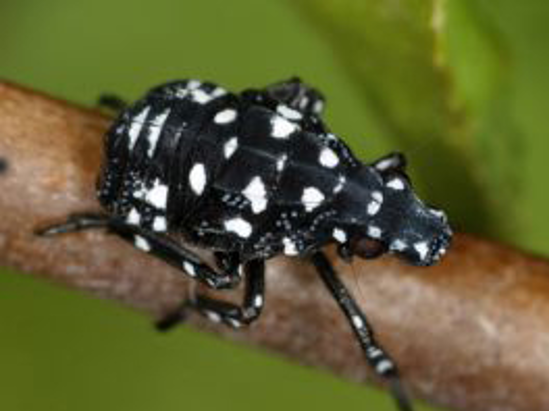 1st - 3rd nymph instar appearance
1st - 3rd nymph instar appearance
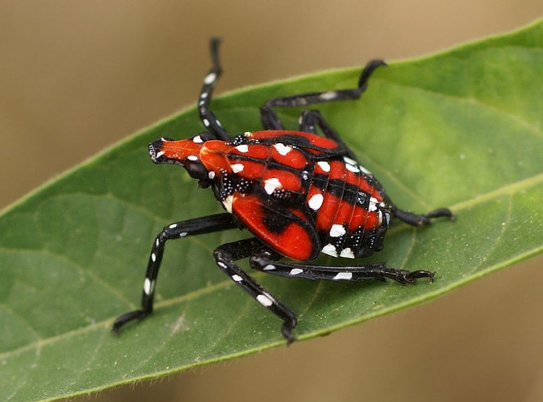 4th nymph instar appearance
4th nymph instar appearance
- There are four nymphal instars.
- The first three instars are black with white spots.
- They grow from a few millimeters to appro. ¼ inch and have no wings.
- They are strong jumpers to avoid capture or predators.
- They appear in this stage beginning in May through July.
- The fourth instars are approx. 1/2inch in size and bright red, covered in black stripes and white spots.
- They are strong jumpers and will jump to avoid danger.
- They appear in this stage from July through September.
Adults
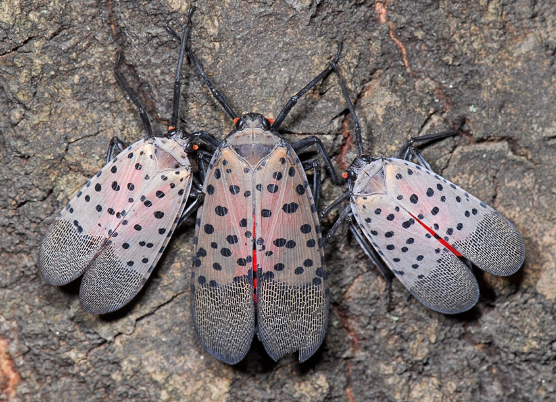 Adult Spotted Lanternfly Wings Closed
Adult Spotted Lanternfly Wings Closed
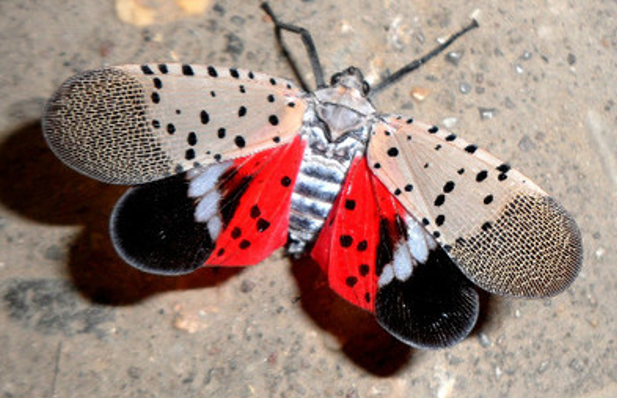 Adult Spotted Lanternfly Wings Opened
Adult Spotted Lanternfly Wings Opened
- The forewing is gray with black spots of varying sizes and the wing tips have black spots outlined in gray.
- Adults can be seen starting in July until December.
- Hind wings have contrasting patches of red and black with a white band.
- The legs and head are black, and the abdomen is yellow with black bands.
- Adult spotted lanternfly with wings open. While the adults can fly, they generally prefer to hop/jump and glide exposing their hindwings.
- Additionally, the hindwings are exposed when they are frightened or treated with an insecticide.
Egg Masses
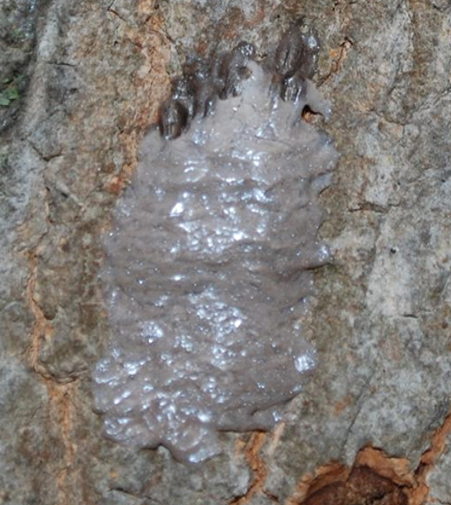 A freshly laid egg masses that has a light gray mud-like covering the eggs.
A freshly laid egg masses that has a light gray mud-like covering the eggs.
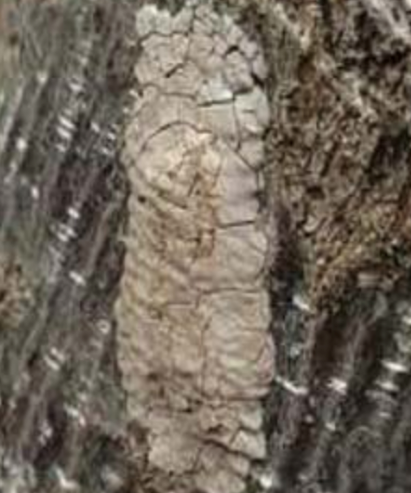 An older egg masses changed in color to a light tan resembling cracked mud.
An older egg masses changed in color to a light tan resembling cracked mud.
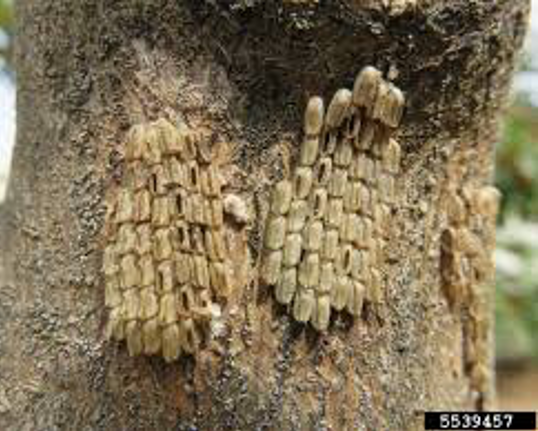 A hatched egg masses that has lost the mud-like covering exposing individual eggs that look similar to seeds.
A hatched egg masses that has lost the mud-like covering exposing individual eggs that look similar to seeds.
- Adult egg laying starts in September through December.
- Egg masses can be seen from September to June.
- While the adult Spotted Lanternfly does not survive the winter, the egg masses do.
- Egg masses contain 30-50 eggs.
- Females can lay up to two eggs masses.
- An egg mass is approximately 1 inch in size.
- Eggs are often laid on flat surfaces including tree bark, rocks, lawn furniture, firewood, boats, RV’s, pallets or anything left outdoors, which can be transported to new locations.
- Research has shown that 80 to 90 percent of egg masses on trees are found 10 feet and above from the ground.
- Freshly laid egg masses have a light gray mud-like covering the eggs.
- Older egg masses change in color to a light tan resembling cracked mud.
- Hatched egg masses lose the mud-like covering exposing individual eggs that look similar to seeds.
Look-Alikes: SLF is often misidentified as these other common insects
*To view each look-alike click on the thumbnails below.
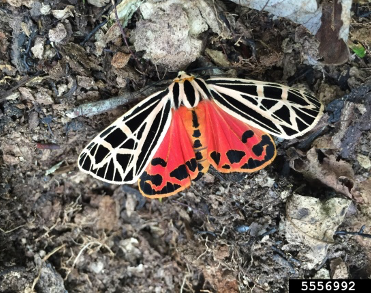
FIGURED TIGER MOTH
FIGURED TIGER MOTH (Apantesis fgurata)
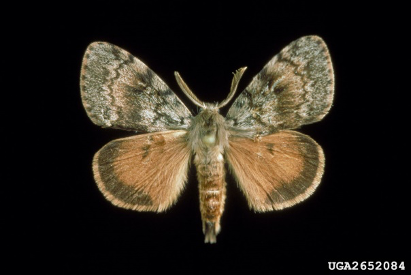
GYPSY MOTH
GYPSY MOTH (Lymantria dispar)
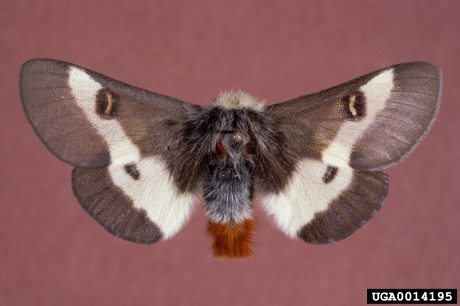
BUCK MOTH
BUCK MOTH (Hemileuca maia)
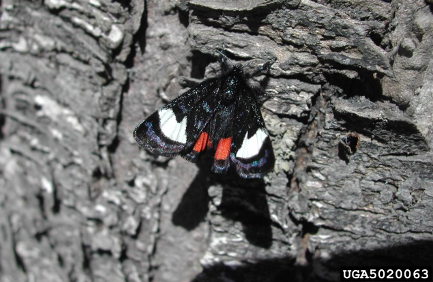
GRAPEVINE EPIMENIS
GRAPEVINE EPIMENIS (Psychomorpha epimenis)
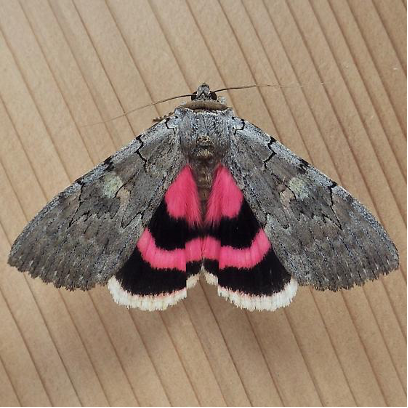
PINK UNDERWING
PINK UNDERWING (Catocala concumbens)
Copyright © 2016 Carl Barrentine
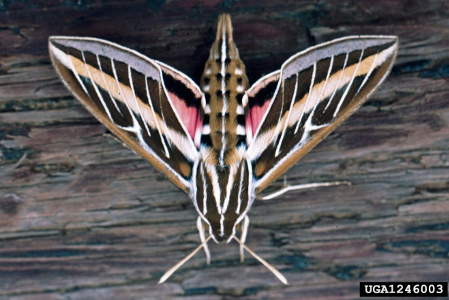
WHITE-LINED SPHINX
WHITE-LINED SPHINX (Hyles lineata)
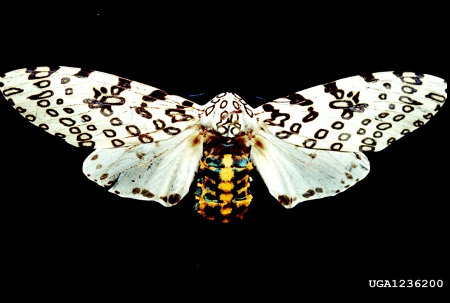
GIANT LEOPARD MOTH
GIANT LEOPARD MOTH (Hypercompe scribonia)
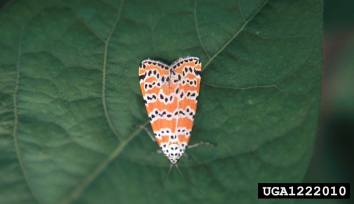
BELLA MOTH
BELLA MOTH (Utetheisa ornatrix)
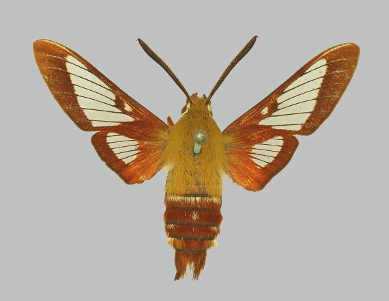
SLENDER CLEARWING
SLENDER CLEARWING (Hemaris gracilis)
The Trustees of the Natural History Museum, London
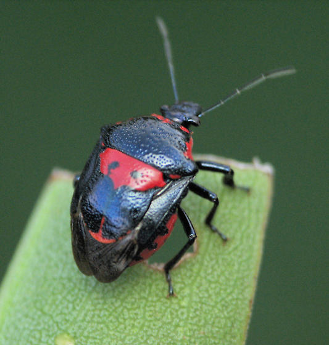
PREDATORY STINK BUG NYMPH
PREDATORY STINK BUG NYMPH (Stiretrus anchorago)
Copyright © 2006 Sean McCann
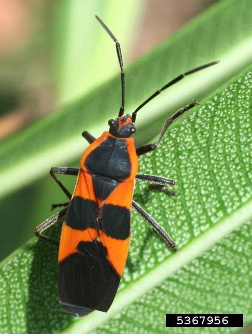
LARGE MILKWEEDBUG
LARGE MILKWEEDBUG (Oncopeltus fasciatus)
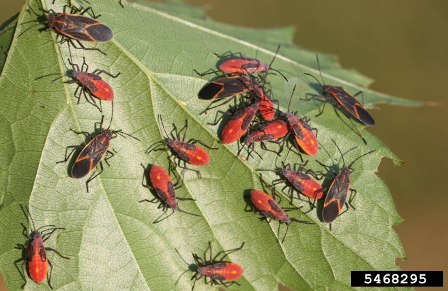
EASTERN BOXELDER BUG
EASTERN BOXELDER BUG (Boisea trivittata)
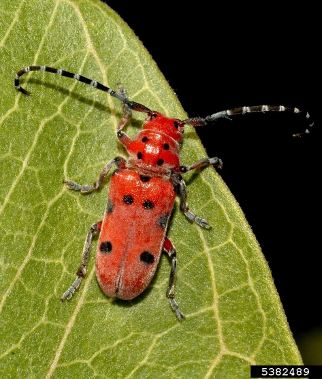
MILKWEED BEETLE
MILKWEED BEETLE (Tetraopes tetrophthalmus)
Spotted Lanternfly Host Information
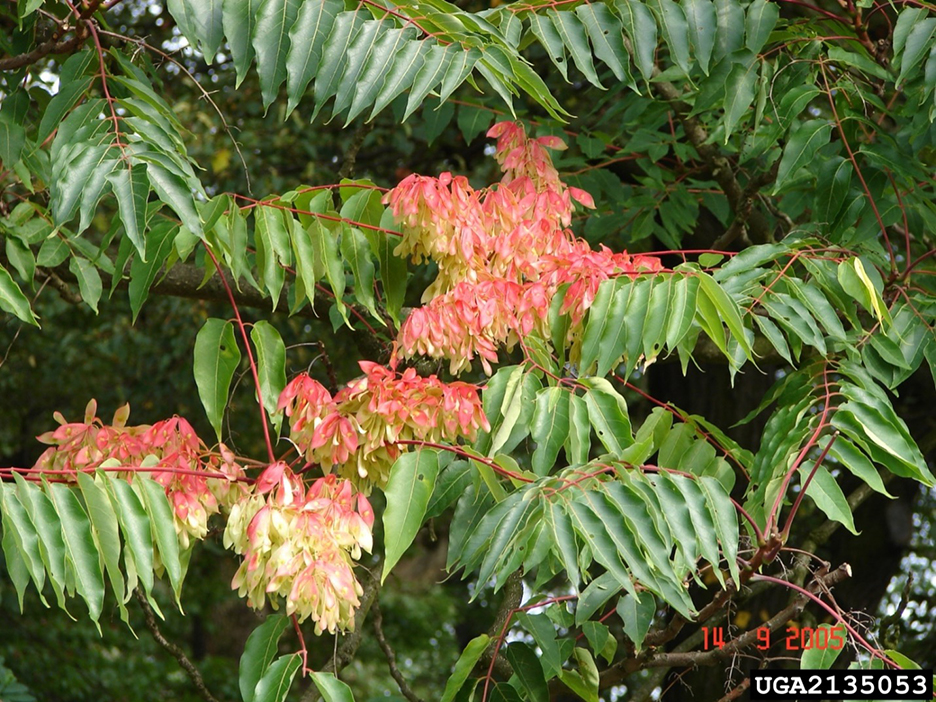 Tree of heaven
Tree of heaven
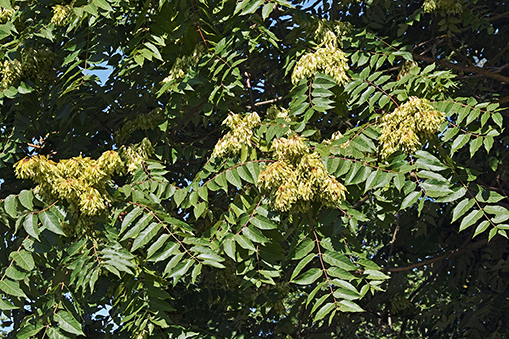 Tree of heaven - female tree with seeds
Tree of heaven - female tree with seeds
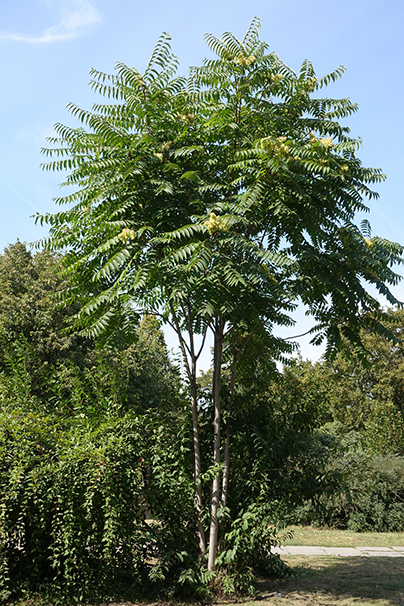 Tree of heaven
Tree of heaven
While the Spotted Lanternfly prefers the Tree of Heaven (Ailanthus altissima), it feeds on a variety of host plants including fruit trees, ornamental trees, woody trees, vegetables, herbs, grains and vines. Spotted Lanternfly is known to feed on over 70 host plant species!
Tree of Heaven (TOH) is the preferred, possibly required, host of spotted lanternfly.
Feeding behavior varies depending on life stage. With no significant preference for TOH, early instar nymphs have a broader host range than adults.
There is a strong preference for TOH during the 4th instar through early- to mid-staged adults. Late season adults tend to prefer trees other than TOH (silver maple, willow, etc.) Turgor pressure and sap flow may contribute to this preference. The proximity of TOH to other preferred hosts had no significant effect on how many SLF were found per tree. There is currently research underway to determine if SLF requires feeding on TOH to complete its lifecycle. (The paragraphs above are from the Kutztown University SLF Host Study.)
Tree of Heaven is also considered an invasive species which is easily mistaken for staghorn sumac, a native that grows in similar soils and areas.
Cornell University: Tree of Heaven Identification, Look-a-Likes and Biology
Spotted Lanternfly Stages And Trees Where It Can Be Found
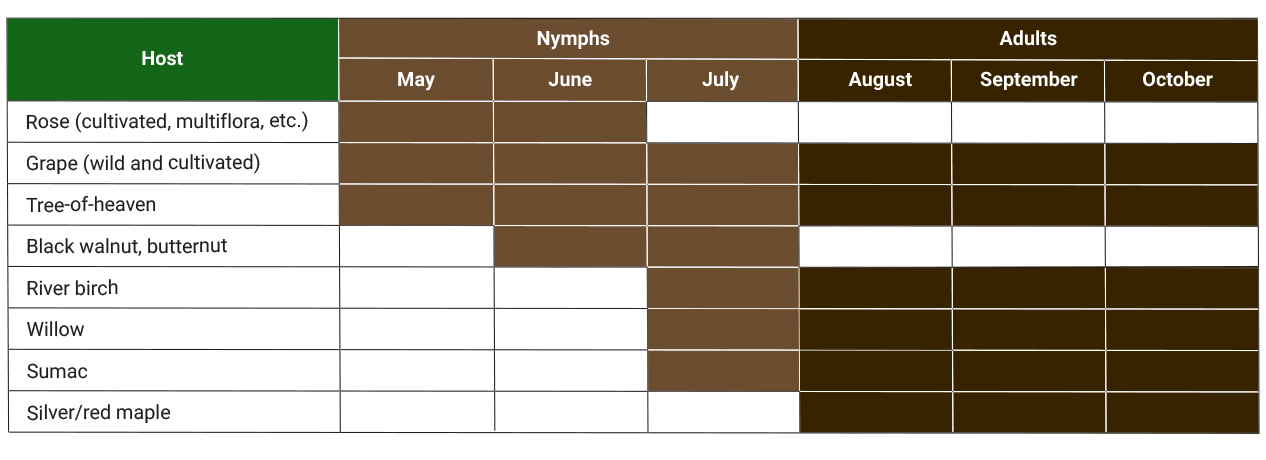
 Official Site of The State of New Jersey
Official Site of The State of New Jersey
